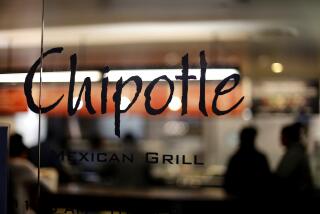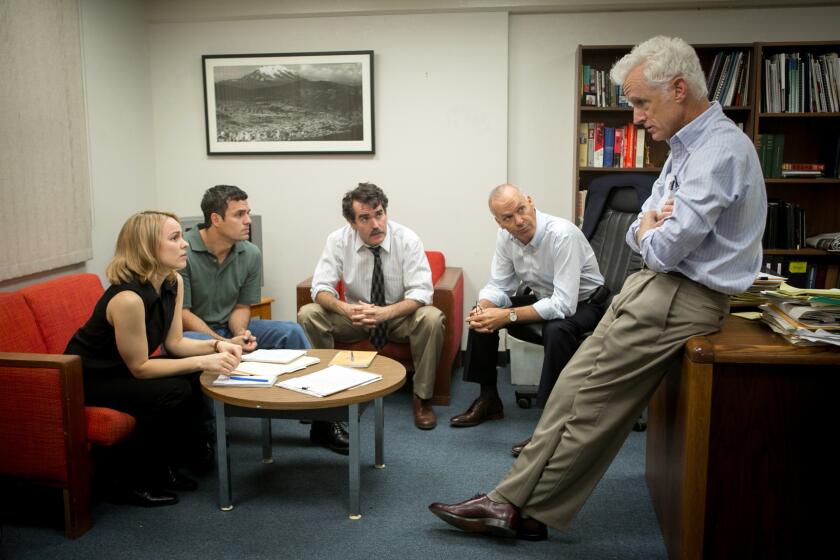Abercrombie CEO tries to stem backlash
After days of silence during which long-held resentment toward Abercrombie & Fitch Co. began to boil over, Chief Executive Michael S. Jeffries tried to stem a backlash against the teen-focused retailer.
Jeffries, in a statement Thursday, discussed criticism that the company lacks women’s XL and XXL sizes in favor of catering toward young, good-looking customers.
“A&F; is an aspirational brand that, like most specialty apparel brands, targets its marketing at a particular segment of customers,” he said in the statement. “However, we care about the broader communities in which we operate and are strongly committed to diversity and inclusion.”
Shoppers have been protesting the business since last week, when an interview that Jeffries conducted with Salon magazine in 2006 resurfaced and went viral. In the piece, he said that “absolutely,” the brand is “exclusionary.”
“Candidly, we go after the cool kids. We go after the attractive all-American kid with a great attitude and a lot of friends,” he said in the article. “A lot of people don’t belong [in our clothes], and they can’t belong.”
On Thursday, the 68-year-old Jeffries said his “resurrected quote has been taken out of context.” But he stopped short of formally apologizing.
“I sincerely regret that my choice of words was interpreted in a manner that has caused offense,” he said. “We are completely opposed to any discrimination, bullying, derogatory characterizations or other anti-social behavior based on race, gender, body type or other individual characteristics.”
The company said it still has no plans to offer women’s clothing in larger sizes.
And the swell of consumer hostility and debate seems to be growing. How far should retailers go to establish a brand identity? Do Abercrombie’s core customers — teenagers — even care?
Attitudes toward the brand among young people 18 to 34 years old this week slumped to their lowest level since October while rivals H&M; and American Eagle got a boost, according to consumer perception tracking firm YouGov BrandIndex.
Actor Benjamin O’Keefe of Orlando, Fla., posted a Change.org petition demanding an apology from Abercrombie, garnering 26,000 signatures so far. Recent USC graduate Greg Karper, 26, posted a video on YouTube of him handing out Abercrombie clothing to homeless people on Los Angeles’ skid row.
“Because we are in a country that allows freedom of speech and opinions, [Jeffries] is entitled to tailor his brand however he likes,” said Tiffany Chin-Sim, 28, a Burbank model who said she has never liked Abercrombie because it “doesn’t feel welcoming.”
“However, his brand and he himself will be perceived with a negative connotation,” she said.
Part of the ill will toward Abercrombie seems to stem from Jeffries’ controversial reputation.
In an age-discrimination lawsuit filed against Abercrombie last year, former company pilot Michael Bustin, 55, alleged that Jeffries required male crew members to wear the brand’s boxer briefs and mandated that the end squares of toilet paper be folded.
The company settled the suit.
Jeffries, who has headed up Abercrombie for two decades, is largely responsible for a brand image centered around muscled, nearly naked door-side models and a portfolio of classic clothing with a sexualized twist.
His vision sets him apart from the cadre of youth-focused retailers — H&M;, Forever 21 and Lucky Brand among them — trying to boost their consumer base by offering larger clothing options. Others, such as Target — which last month apologized for labeling a plus-size dress “manatee gray” — are increasingly sensitive about the range of their customers’ waistlines.
But even though Jeffries’ comments were “hurtful and inappropriate,” the consistency of his strategy makes good business sense in a way, said Gabriella Santaniello, a retail analyst with Wedbush Securities.
Much of the outrage this week has stemmed from older consumers, not the more forgiving and forgetful young shoppers Abercrombie targets, Santaniello said. And investors aren’t too flustered: The New Albany, Ohio, company’s shares slid less than 1%, or 37 cents, to $53.32 on Thursday.
“Their brand image has been the same from the beginning and they’ve been quite successful with it,” she said. “And you can’t be everything to everyone — otherwise, you set yourself up to more risk.”







